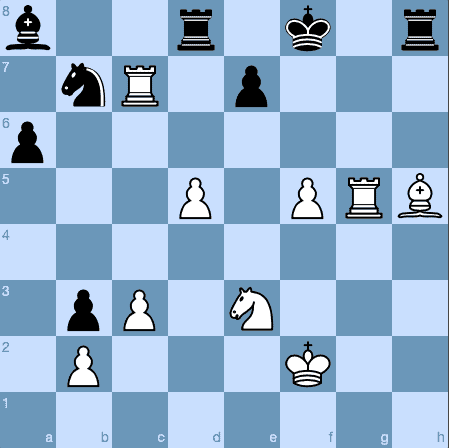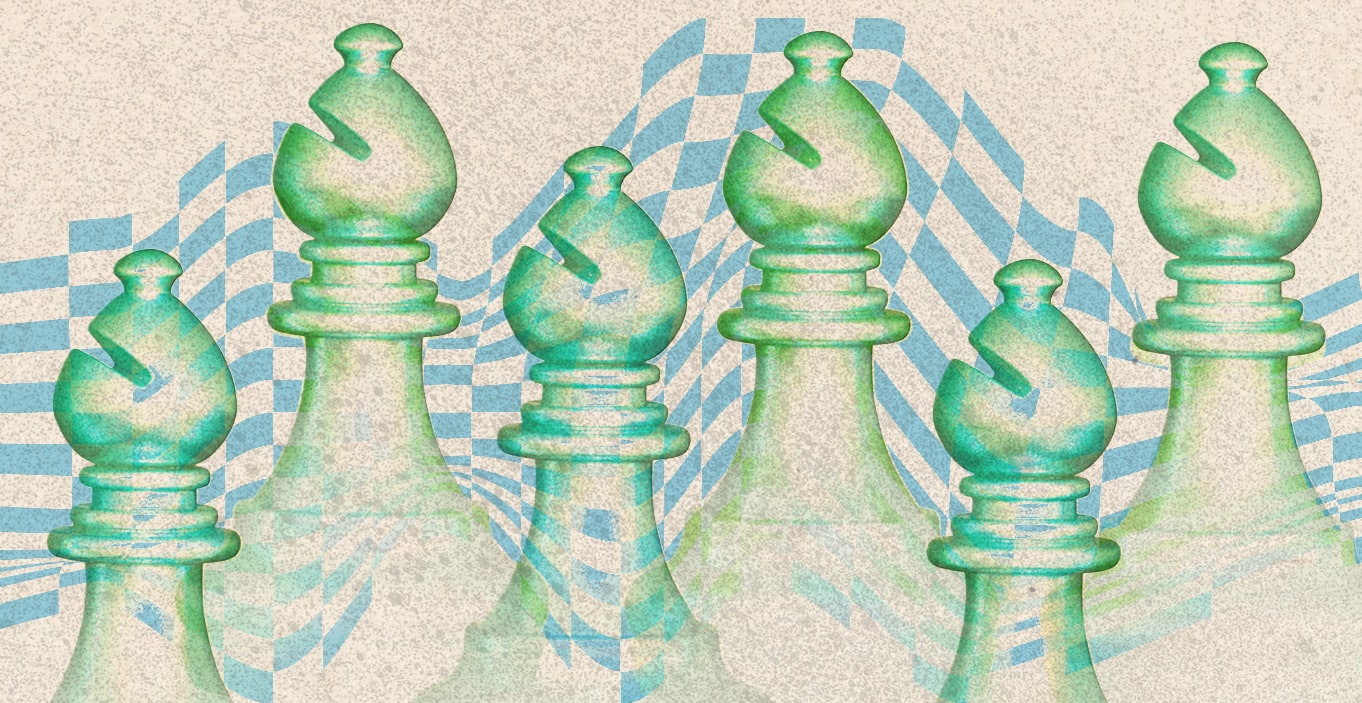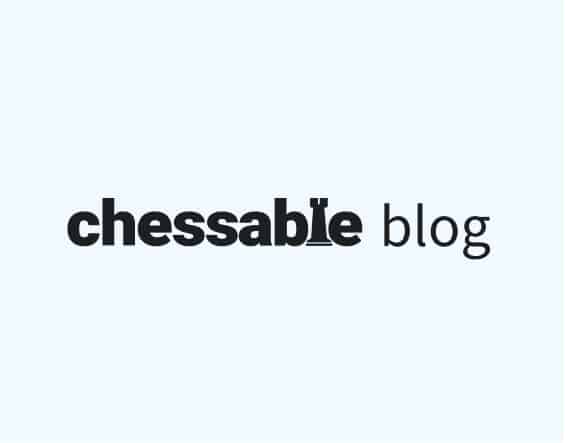When we think of having the initiative in a game of chess, we tend not to associate it with trading queens. Yet our new Chessable course – Grandmaster Gambits 1. e4 – Part 2: Aggressive Lines by Grandmaster Simon Williams and International Master Richard Palliser – advocates several lines in which the plan is indeed to pursue a queenless initiative.
For instance, against the Black Lion (an old favourite of Simon’s) the recommendation is 1.e4 d6 2.d4 Nf6 3.Nc3 e5 4.dxe5 dxe5 5.Qxd8+ Kxd8 6.f4, which may come as a surprise to anyone familiar with the usual style of the Ginger GM.
The theme is extended into other openings too. The course likes to play for an attack against the Pirc Defense with a very early h2-h4, but it is also useful to have more than one string to the bow. What if Black is an expert in the Pirc and takes the necessary steps to prevent White’s early attack from hitting the target? This is where a player needs to be flexible.
We associate Garry Kasparov – the fearsome 13th World Champion – with consistently strong and aggressive chess moves. Yet in one of the illustrative games from Grandmaster Gambits 1. e4 – Part 2: Aggressive Lines we see the great champion take a different approach, with a well-timed exchange of queens.
The Context of the Game
This following game is a wonderful example of how to use a queenless initiative.
Rapidplay tournaments were still relatively new in 1990. This one utilised a knockout format. Kasparov, paired with Jonathan Speelman in the first round, won the mini-match by a score of 1.5-0.5. He went on to have great trouble (and some controversy) against Korchnoi in the next round before ultimately progressing to the final, where he beat Nigel Short, 2-1.
Jonathan Speelman was a very active player at the time and could be a danger to anyone. He had made a strong impression in the first two rounds of the 1988-1990 Candidates matches, defeating Yasser Seirawan 4-1 in his first match and then beating Nigel Short 3.5-1.5 in the next one. His progress was finally halted by Jan Timman in the Candidates semi-final, although it was a close call; Timman squeezed through, 4.5-3.5, with a vital win in the final game.
This position appeared on the board after 17 moves of a Pirc Defense. One would expect Kasparov to castle here (either side) and then work on attacking Speelman’s king. However, the move he plays is a surprise.
Unexpected Trade of Queens
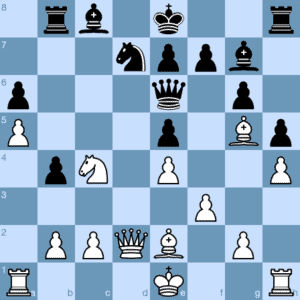
Garry Kasparov – Jonathan Speelman
Paris Immopar Rapdiplay, 1990
White to Play
18.Qd5!
Offering a trade of queens, which Speelman can hardly decline. At first glance, it seems to ease Black’s burden. It is very instructive to see how Kasparov builds up the level of his initiative.
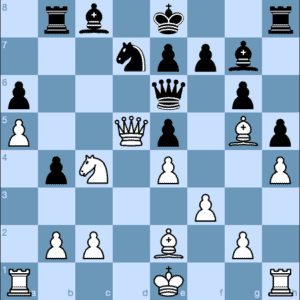
18…Qxd5
19.exd5 Bh6
20.Kf2
‘Connecting the rooks and not fearing being left with a cramping pawn on g5.’ (Williams and Palliser.)
20…f6
21.Bxh6 Rxh6
22.Rhd1 Rh8
A Second Front
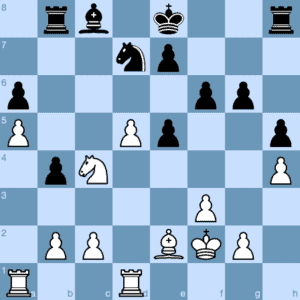
23.g3
‘An unexpected change of approach, or possibly a classically-orientated decision as Kasparov looks to open up a second line of attack on the kingside.’ (Williams and Palliser.)
23…Kf7
24.f4
Cracking open more lines. The mobility of the white pieces is all set to increase dramatically.
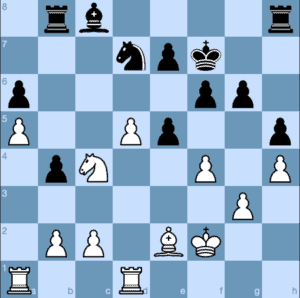
24..exf4
25.gxf4 Bb7
26.Rd4
‘A powerful rook lift. Kasparov hasn’t forgotten about the weakness on b4 and suddenly Speelman must have wished he’d just left his bishop on c8.’ (Williams and Palliser.)
26…Ba8
27.Ne3 Nc5
28.Rg1
‘In typical fashion, Kasparov plays right across the board.’ (Williams and Palliser.)
28…b3
29.c3 Rbd8
The Queenless Initiative Grows
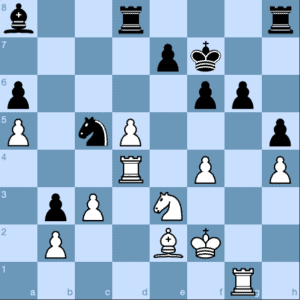
In such positions, the advantage of one side can be judged by comparing each piece to its counterpart.
30.Rc4 Nb7
31.Rc7 Nxa5
32.f5
Kasparov’s advantage has gown again just over the last three moves. The lunge by the f-pawn causes more confusion and compromise.
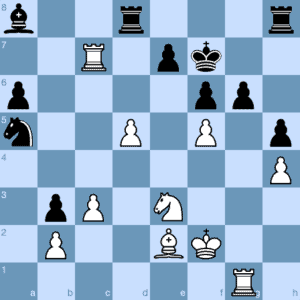
32…g5
33.hxg5 fxg5
34.Rxg5 Nb7
35.Bxh5+ Kf8
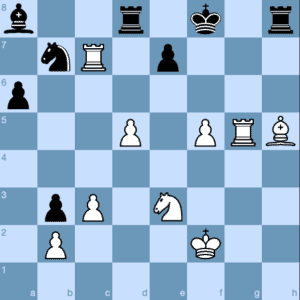
36. f6 1-0
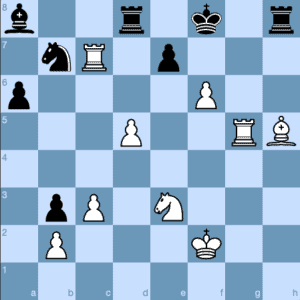
Speelman resigned here as 36…exf6 37.Rf7+ forces checkmate after 37…Ke8 38.Re5.
This was a surprisingly smooth ride for White after the exchange of queens. Keeping Speelman quiet and preventing him from creating chaotic counterplay was never an easy task. Yet Kasparov’s highly instructional way if using the queenless initiative seemed to make Black’s defeat inevitable.
Naturally, most of us won’t have the energy or accuracy to replicate his play exactly, but the idea of trading the queens and then maintaining the initiative with precise moves, bringing the best out of each piece, is definitely worth remembering. This is by no means the only game in which Kasparov used such a strategy and we will return to the subject soon.
Chessable Course
Grandmaster Gambits 1. e4 – Part 2: Aggressive Lines by Grandmaster Simon Williams and International Master Richard Palliser is now available.
Part 1 is also available to complete your sharp 1.e4 repertoire.


